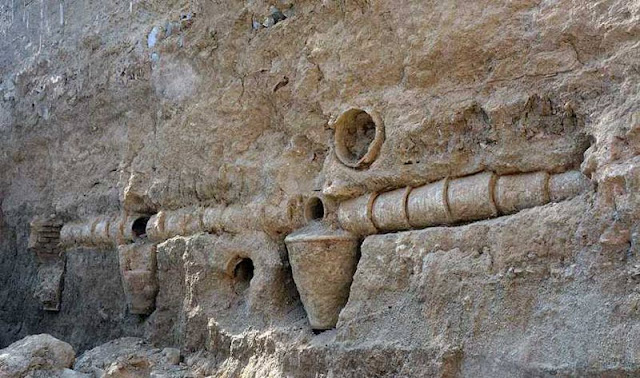Mount Khajeh (کوه خواجه), a flat-topped black basalt mountain located 30 kilometers southwest of the town of Zabol, is a seasonal island in the middle of Hamoon lake, in the province of Sistan and Baluchestan. The mount, a lone peak located in the middle of Hamoon Lake is turned into an island during the rainy seasons of the year.
The trapezoid-shaped basalt lava is situated 609 meters from the sea level with a diameter ranging from 2.0 to 2.5 kilometers. It is the only natural height left behind in the Sistan area, where a citadel with palace, fire temple, pilgrimage center and cemetery known to locals as the "Suren's resting place" reminiscent of the past are still in good condition. Also there are number of small temples, in particular a temple known to the locals as the "Koochak Chel Ganjeh", believed to have belonged to the cult of Mithra, which was the religion of Parthians. Some believe this section of the edifices were constructed during the Achaemenid dynastic Period.
Mount Khajeh Complex is greatly respected by followers of the three ancient faiths of Zoroastrianism, Christianity and Islam and considered as a holy place. The mountain has been named after the mausoleum of Khajeh Mehdi, one of the sympathizers of the Alavi rulers.
The ancient site was identified by Marc Aurel Stein in 1916. The site was later excavated by Ernst Herzfeld, and was thoroughly investigated in part by G. Gullini in a short expedition of 1960. According to his findings the palace and the fire temple were already in existence in the Parthian dynastic period. The ruins on the southern slope, date back to 1st century BCE.
The cemetery consists of a number of graves, including that of Khajeh Mehdi, and stretching over a few hectares. At the top of his tombstone is a small opening where locals place their hand inside when praying. Most of the remaining tombstones are flat although a few of them are also curved.
The oldest and by far the most important structure of the site is an ancient fortress on its eastern slope, with various sections such as Ghagha Shahr, the Rostam Castle, the Kaferoon Castle, Sam Fortress and the Kohan Fortress. The remains of a fire temple attest to the importance of the island in pre-Islamic Iran. The fire temple is on a terrace behind high walls and is protected by two forts known as Chehel Dokhtaran and Kook Kahzad.
Unique murals had decorated the walls of the fortress, few of which have survived. The once vividly colored wall-hangings included motifs taken from the repertoire of western artists, yet the art is not western. Sadly in restoring such decorations, liberties have been taken with designs which ignore their original properties. Some of the original murals depicted men riding horses and cougars and also a puzzling one of two men holding a ribboned ring.
There are also three bas-reliefs belonging to the Sassanid dynasty (224-651 CE), depicting horse riders, which were carved on one of the walls of the castle. The reliefs are the only ones made of clay remaining from the Sassanid period in this edifice. Very little remains of these bas-reliefs as they are gradually being destroyed due to prolonged inattentiveness. What has remained of the bas-reliefs is extremely vulnerable and could be completely washed off by heavy rains.
.jpg)
.jpg)
.jpg)

.jpg)

.jpg)



.jpg)

No comments:
Post a Comment